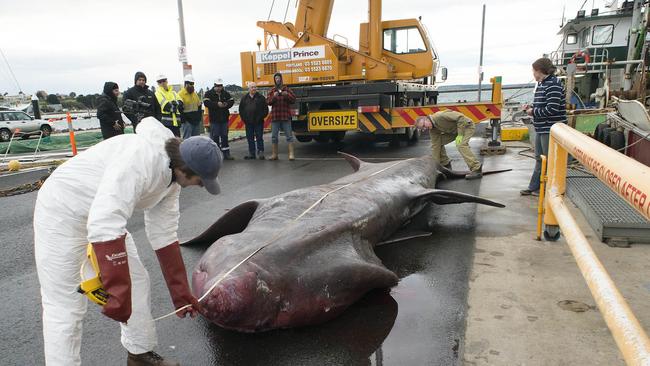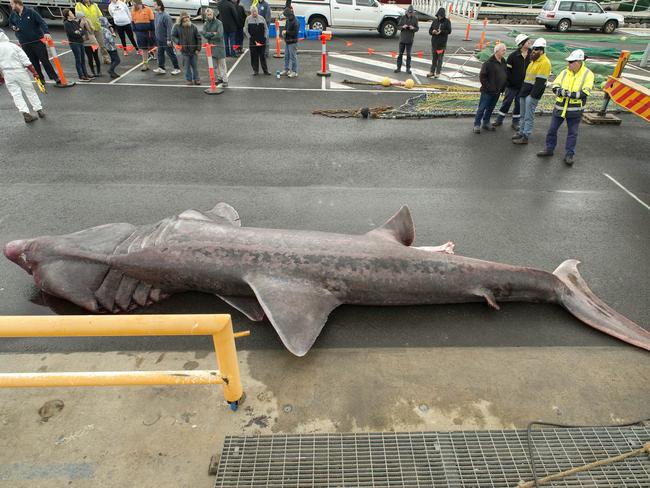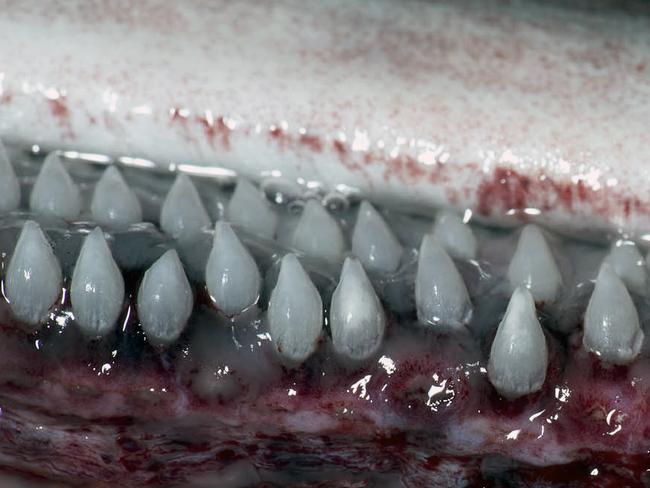Commercial fishing boat skipper donates lucrative shark fin to Melbourne Museum instead of selling it as a culinary delicacy
THEY accidentally reeled in a monster three-tonne rare shark, but it is what Victorian fishermen did next with the 6.5m monster that has raised eyebrows.

WHEN they accidentally reeled in a giant, three-tonne shark, fishermen in Victoria theoretically hit the jackpot.
The 6.5 metre rare basking shark — the second biggest living species of fish — would have fetched big bucks on the Chinese shark fin soup market.
But commercial angler James Owen and his crew have saved the elusive sea monster from the cooking pot, and have earned praise by donating it to science instead.

“Basking shark fins would be highly sought because they’re very big,” Dr Gomon told news.com.au after the whopping catch was made off the coast of Portland, in Victoria’s southwest, on Sunday.
“This basking shark’s pectoral fins were probably over a metre in length and 60cm or more wide, and there were two of those. Its cuttle fin probably spans 1 metre to 1.2 metres. There are other fins, too: the pelvic fins.
“I’ve got a high regard for the skipper in his initiative in contacting the museum.
“Obviously, he saw that it was far more valuable as a museum specimen than anything he could have made some money off of, and that’s his likelihood. Fish is how he makes his living.
“Those fisherman were as much interested in conservation, I think, as the normal person in the street, if not more so.”

Melbourne Museum scientists travelled to Portland’s wharf to dissect the giant specimen yesterday because it was too big to transport in one piece.
Dr Gomon says the basking shark was so big, he and his fellow scientist needed a crane to lift it out of the boat. It took close to 5 hours of work “flat chat” and multiple knife sharpenings to cut the shark into pieces big enough for them carry.

Scientists know very little about basking sharks because they are so elusive.
“It was caught by accident and it’s fantastic that they have offered it to the museum,” senior collections co-ordinator Dianne Bray said.
“We would rather see something in the ocean, everyone would rather see it in the ocean, but this way it is preserved so that we and future generations can learn more about them.”
“One shark’s probably not going to tell us everything about what’s going on down there, but the more information we have from specimens, the bigger picture we can build up about their life history and what they’re doing.”



